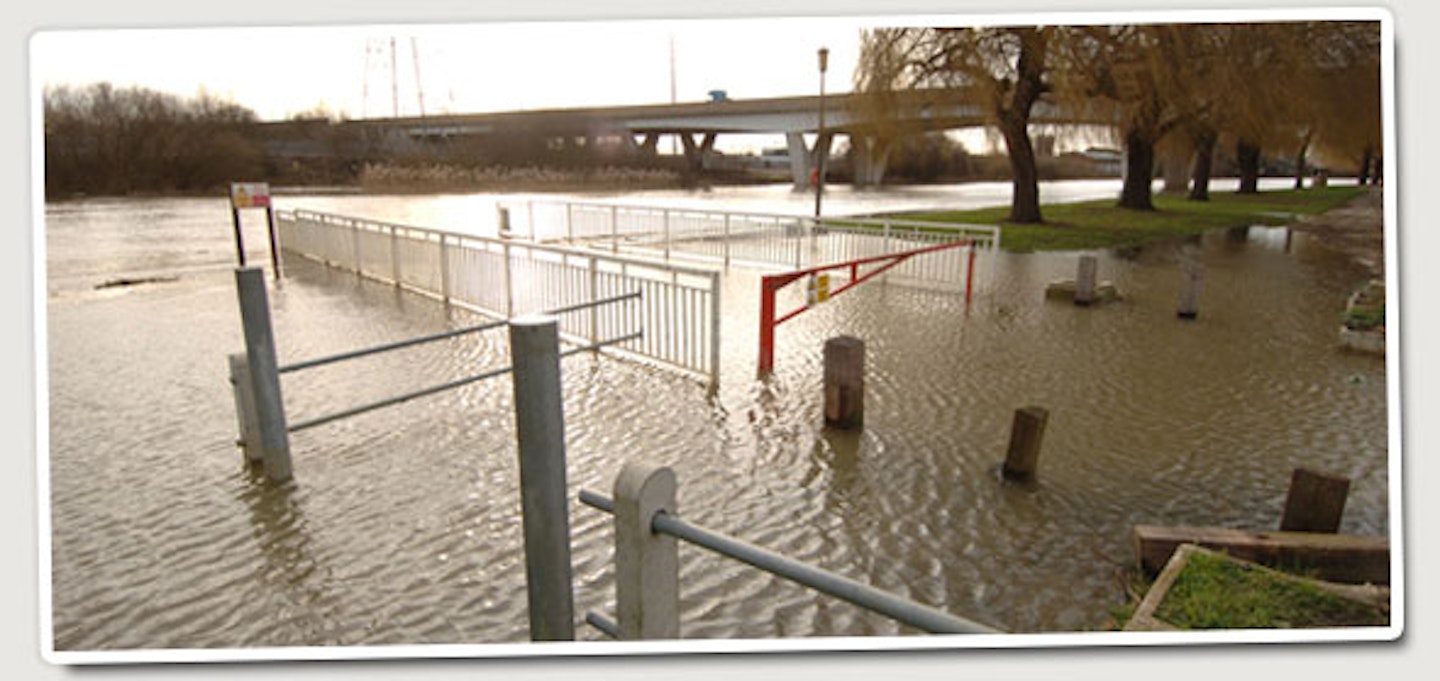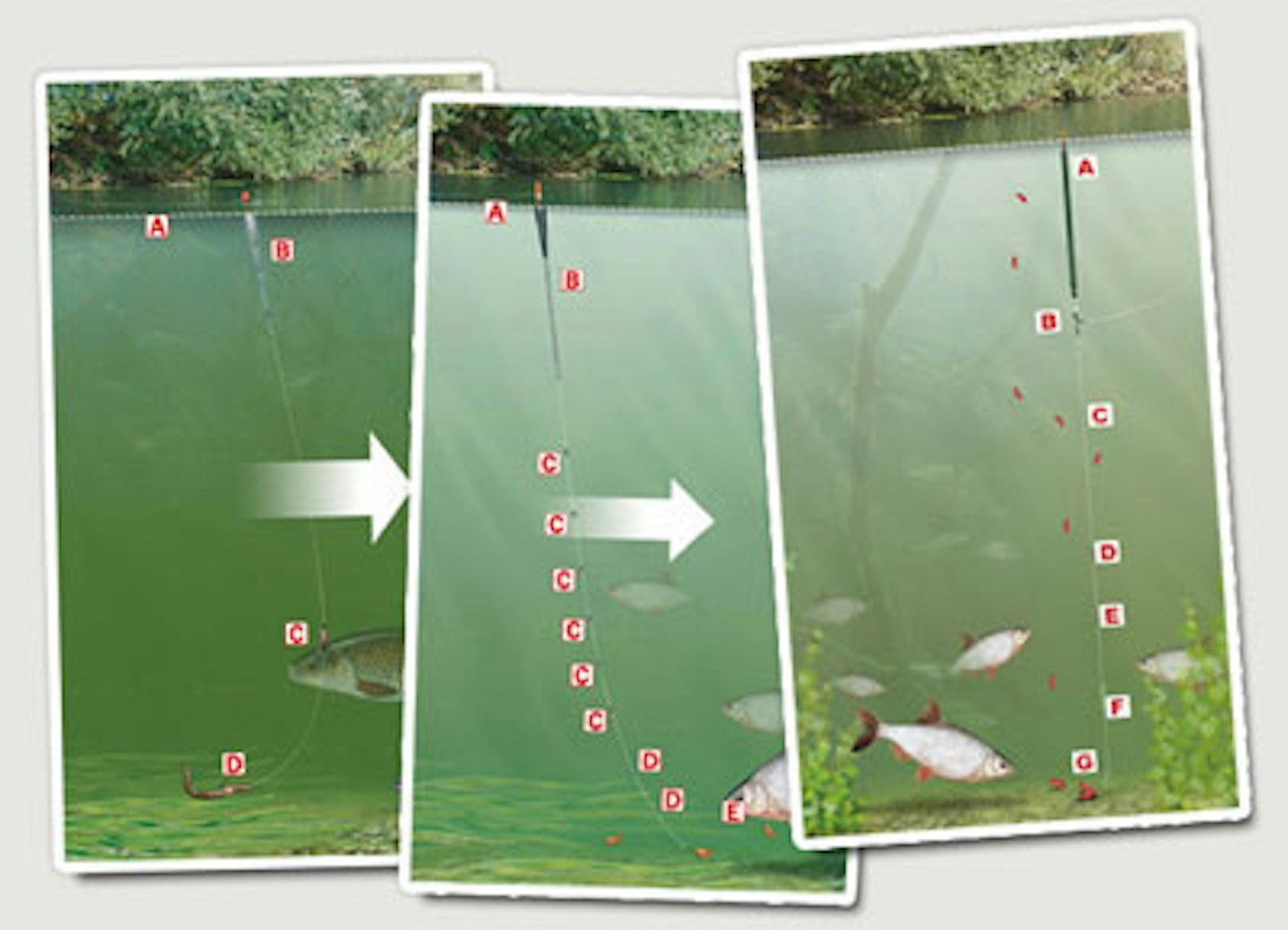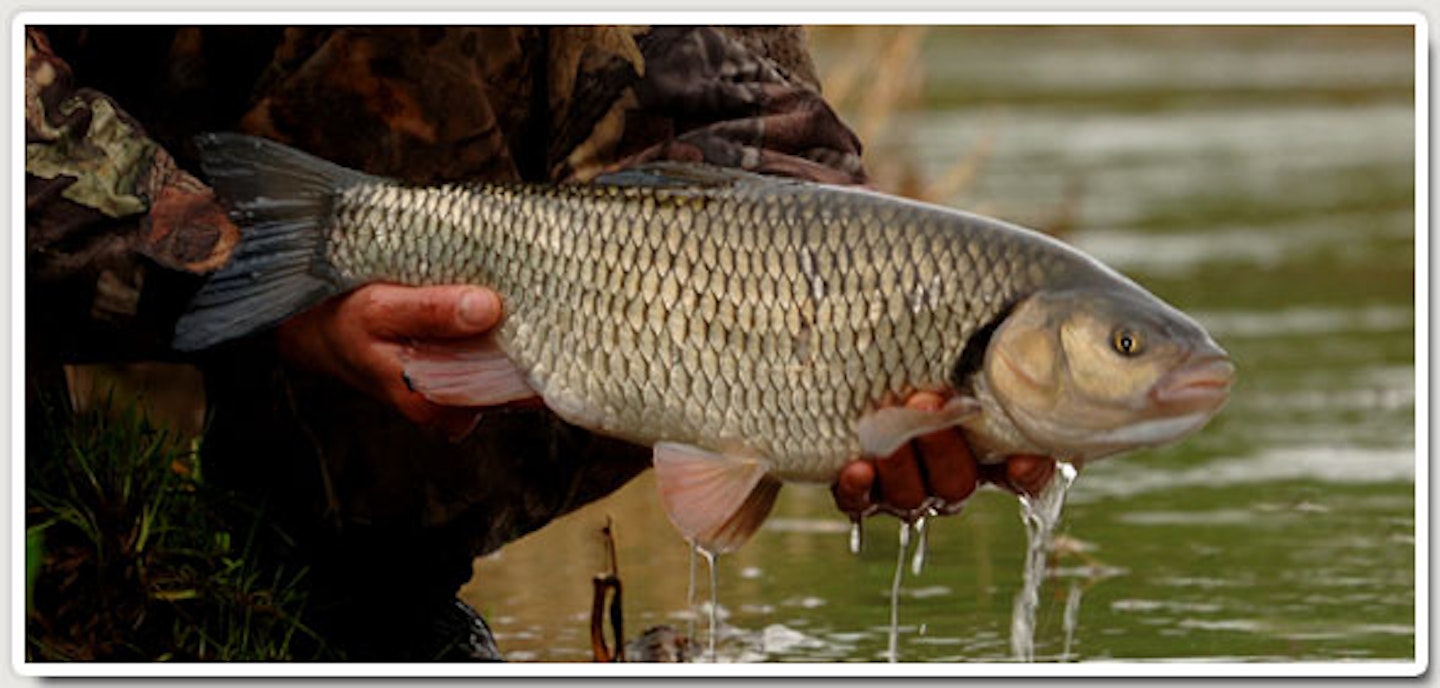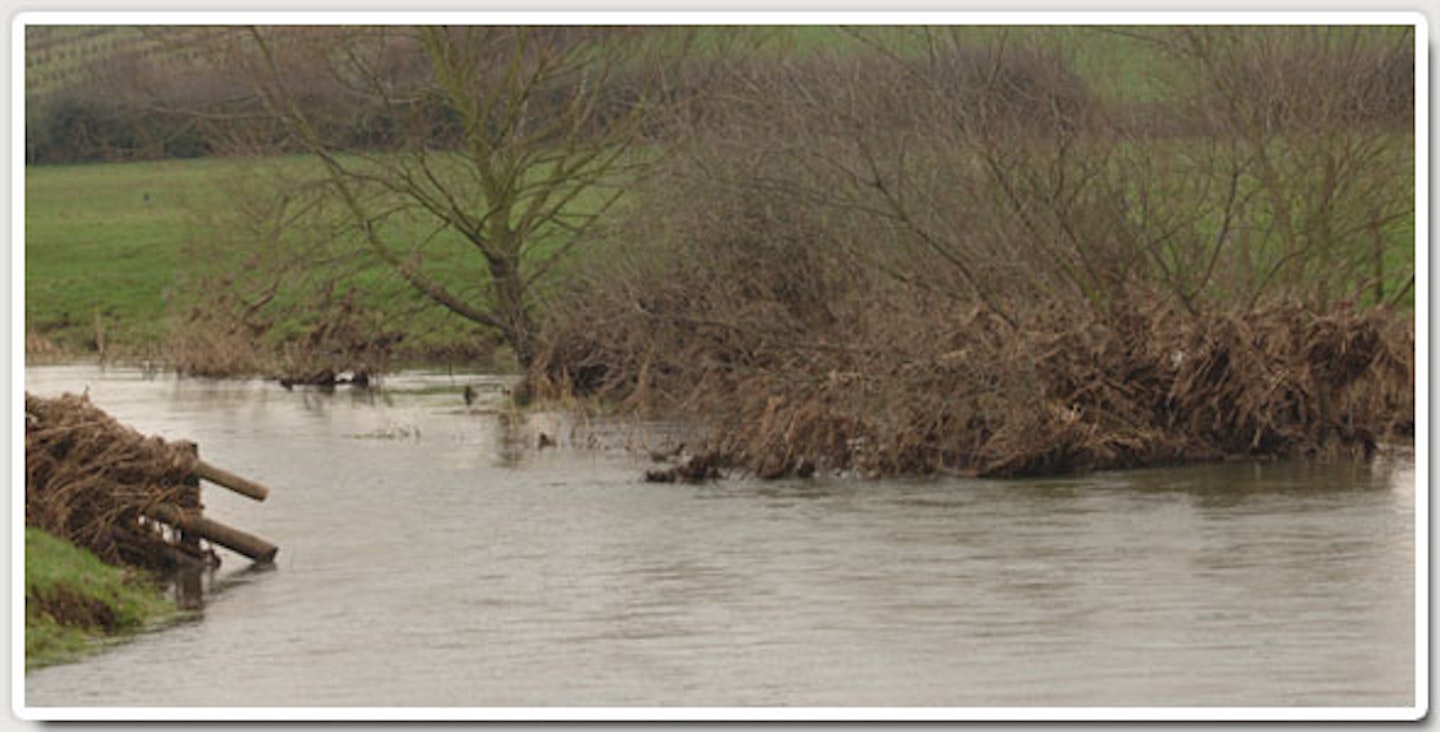If you are looking to carry on fishing rivers and streams throughout the winter months there’s one fish that you should target and that’s the chub. Here’s a mass of fishing and bait tips, tactics and advice that is sure to help you catch plenty of chub – one of our most obliging cold water fish…
WHERE TO FISH
Chub can be found in almost every English, Welsh and lower-Scottish rivers and streams. They have bred well and many numbers of chub of decent sizes are targetable across the country with 100s of waters giving up 5lb specimens, and many prime rivers providing the angler with chub to over 6lb.
They can be found in deep and powerful rivers such as the Trent, Severn, Thames and Wye, through to tiny little backwaters that you could wade or even jump across. So there’s a high chance that you can find chub a short drive away from your home.
But we don’t have ever single stretch of water on this website, so why not ask at your local tackle shop to see if there’s flowing water near you where you can catch a chub or ten?
CHUB LOCATION
Once you have found a river or stream that holds chub, you’ll have to work out where would be the best place to fish, and that depends upon whether you are faced with a wide river or a smaller stream.
Chub tend to move around quite a lot on bigger rivers in the hunt for food, so you have a chance to draw chub into your swim with regular feeding, but chub on small rivers, streams and backwaters tend to hide in certain areas so a good understanding of watercraft will pay dividends to locating those fish.
Whether you are fishing a big river or a small stream, chub seem to love the same old features: Overhanging trees provide sanctuary and a place to launch an attack on passing prey. Barges and boats, and floating weed rafts provide the same cover. Undercut banks around the outer edges of sharp corners are a well-known chub hiding spot, as are marginal weeds and cabbages. You will also find chub tucked up behind streamer weed and rocks, behind and under bridge stanchions, and within the slack water alongside a crease in the river (where slack water meets fast water).

STATES OF THE RIVER
Although chub can be caught in a raging flood, that isn’t the best time to try to catch them. The very best time to catch chub – and all river species - is when the river is fining down after a flood. That’s the time when all the silt and sediment held in the river by a flood is swept away and the water clears again. This is when the fish will be able to see their food better, and they will need to move out of the small side streams and eddies where they took sanctuary from the raging torrent and head back into the main river to seek out food.
All other times when the rivers are running at normal pace with normal colour and good for chub too as the fish will be feeding and acting normally during these periods.

METHODS FOR SUCCESS
The three best methods for a successful river and stream chub fishing session are to use float or feeder or specialist methods. Pole tactics do work, but they never seem to get the same results as the other three methods mentioned.
Float tactics
Either a stickfloat, chubber, Avon or waggler trotted through a loosefeed and primed swim can bring lots of chub to the net on larger rivers. A constant stream of loosefeed maggots or casters will soon bring those chub to your swim where you can reap the rewards.
Prime places to try stickfloats, chubbers and Avons are straight sections of river known as glides. Better still are those straight areas where tributaries join the main river as here the fish will sit waiting fro food to wash by.
If there’s a row of moored boats on the far bank, or overhanging trees in a line, try casting a waggler towards them and run the float right alongside them. You’ll have to pay close attention to the amount and speed of line you pay out from the reel to ensure the float doesn’t start drifting away from the boats or trees/bushes, but get that right and you could be on for a decent catch of quality chub hiding underneath the features.

Leger tactics
Legering works well on big rivers through to tiny streams. It’s a great way to catch chub and can be incredibly productive so long as you use the right set-up.
Chub are very shy creatures and care must be taken not to spook the fish so although a large feeder filled to the brim with casters, maggots or hemp will work well on the River Trent, Wye and Severn, the same tactics will do more harm than good on a small stream or tributary. On those sort of waters a little Arlesey bomb would be best, swung in to the swim with a gentle plop so as not to disturb the fish.
When legering across a big river with a substantial flow you’ll need plenty of lead to hold the bottom and fish with the rod pointing skywards to keep as much line out of the water as possible, to prevent the flow knocking the feeder out of place.
The best quivertips to use will be carbon ones, and stiff ones too as they will stand a chance of remaining fairly rigid as the river current tugs on the mainline.
When tackling a small stream or tributary you will be able to use much more delicate tackle and more sensitive quivertips as both the flow and distance to be cast will be drastically reduced. On these rivers an 11ft Avon rod with the quivertip top section would be perfect.
You will also be able to touch leger and free-line your baits on smaller rivers. Touch legering involves holding the mainline between finger and thumb to feel for bites, while freelining involves dropping fairly weighty baits into likely-looking holes and letting the bait roll under its own weight under features and into deeper holes in the river bed.
Legering on small rivers and streams often requires stalking and moving swims quite a lot as you may only catch one chub from each swim so it’s best to travel light with just enough tackle in a rucksack and use a folding chair to sit on as these are much easier to carry than seatboxes.

Specialist tactics
Fishing for chub using specimen tactics is really easy. In fact, if you’ve ever fished for carp using bite alarms and semi-fixed bolt rigs you’ll know exactly what to do.
Basically this style of fishing is best done on bigger rivers and involves heavy leads, attached to the line using a semi-fixed set-up, and cast out and left until the chub takes the bait and hooks itself against the weight of the lead.
You’ll need to know how to hair-rig the baits as this technique tends to work much better than side hooked baits, and you’ll need a selection of heavy flat leads, some safety clips (available in most good tackle shops) and some braided hooklength material if you wish to camouflage your rig.
After casting out the rigs you will need to place the rods on bite alarms and set the reel’s free-spool mechanism to allow the fish to run with the bait.
The best rods to use for this style of fishing are Avon rods incorporating the float top section. You’ll be able to get away with using 1.25lb test curve Avon rods, but 1.5 or even 1.75lb test curve are slightly better as they offer better casting potential with the heavier leads needed for some rivers.

BAITS TO CATCH CHUB
One well known fact about chub is that they will eat just about anything from tiny bottom dwelling crustaceans to small silverfish. They really don’t care as long as these giant-mouthed fish get a meal.
Their almost compulsive instinct to snatch at anything that drifts past their lairs is great for us anglers in that we can use almost anything as bait to catch chub, but obviously there are some real firm favourites, and they are detailed below…
Lobworms
These are a classic bait for chub. Each time a river floods the extra water pushing downstream will scour away the river banks and nearby fields and wash lobworms into the river. Chub soon find them and devour them whole as they drift past, and that makes the giant lobworm a completely natural meal for a chub.
Lobworms are best hooked through the saddle using a size six hook. Half a lobworm should be hooked through the broken end using a size 12 hook.
Pellets
The fishmeal scent trailing from a large halibut pellet cannot fail to attract chub. The best pellets to use are large ones that require drilling with a nut drill so they can be hair-rigged and set so they just touch the bend of a size 8 hook.
The good thing about using a large drilled halibut pellet is that smaller species cannot take the bait while it’s sat at the bottom of the river.
Pellets are now becoming a very popular chub and barbel bait on well fished rivers such as the Trent, Wye and Severn and usually bring very swift results now that the fish are used to finding them on the bottom.
Cheese paste
This is a classic chub bait. A very smelly chunk of cheese paste is one of the very best small stream and river chub bait as it offers enough weight to be swung into the swim and rolled underneath weed rafts and under overhanging bushes right towards the noses of any waiting chub.
.jpg?auto=format&w=1440&q=80)
Luncheon meat
Another classic chub bait that can be fished either as cubes or torn chunks, on specialist or leger rigs is humble luncheon meat. You could use it straight from the tin, or tear it or cube it the night before fishing and flavour it with spices by coating and lightly frying it.
Maggots
A single, double or even a big bunch of maggots is one of the best trotting baits for chub. Simply loosefeed plenty of maggots well upstream of where you think the chub will be lying and allow them to drift into the swim, and follow them with your floatfished maggot hookbait. You’ll soon see the float go under as a large chub sucks up your wriggling bait.
Bread
A large chunk of bread flake can be fished upon a leger or a float rig. It’s buoyancy coupled with the bright colour makes the bait flutter enticingly over the river bed making a very attractive and visual bait that the chub will see for yards.
When fished with small handfuls of mashed bread (bread mixed with water and broken into pieces) this can be a very deadly combination on both large and small rivers.
Boilies
Maybe not everyone’s cup of tea, but boilies are definitely one of the best baits to use for really big chub since specialist anglers have been introducing them into river systems across the country.
Brown fishmeal based boilies tend to be the best, with Nutrabait’s Trigger a firm favourite among anglers hunting for a personal best chub.
As boilies are hard baits, they will need to be hair-rigged. See the link above to find out how to tie the knotless knot hair rig.
TACKLE FOR CHUB FISHING

You won’t need anything out of the ordinary when it comes to fishing for chub. The average size you are likely to encounter is around the 3lb mark, but the problem anglers face is that chub tend to be found among snags. This means that you should use fairly strong tackle to ensure that you land every chub that you hook.
Mainlines should be around the 6lb mark and you could fish the line straight through to your hook if you wish, or use a hooklength of around 5lb or more.
Float rods need to be fairly powerful to be able to control a hooked chub against the flow and stop it from reaching any weed, plus the rod needs to be long too. A 13ft, 14ft or even 15ft rod is perfect as they will give you excellent float control and plenty of leverage when controlling big chub near the net as they do tend to surge towards marginal snags at the end of the fight.
Leger rods should be powerful to combat strong flows and have robust carbon push-in quivertips for the same reason.
Use a size of hook to suit the bait you are fishing with, but remember to use strong hooks as chub can pull your string a bit and will quite easily straighten fine wire match hooks if you are not careful.
